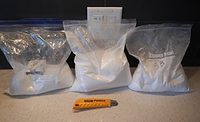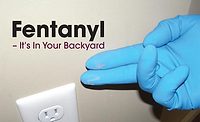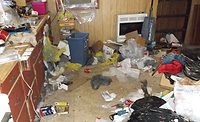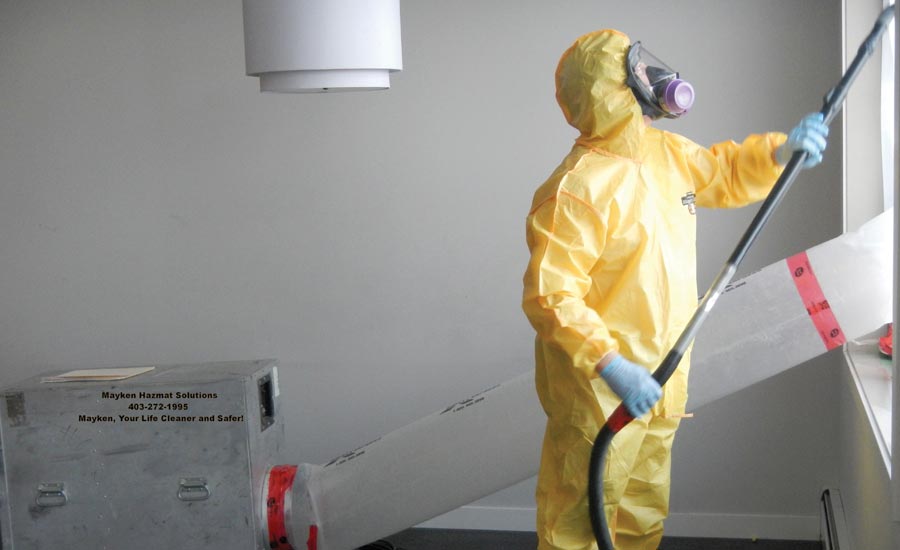Fentanyl Lab Cleanup & the Growing Need for Educated Remediators


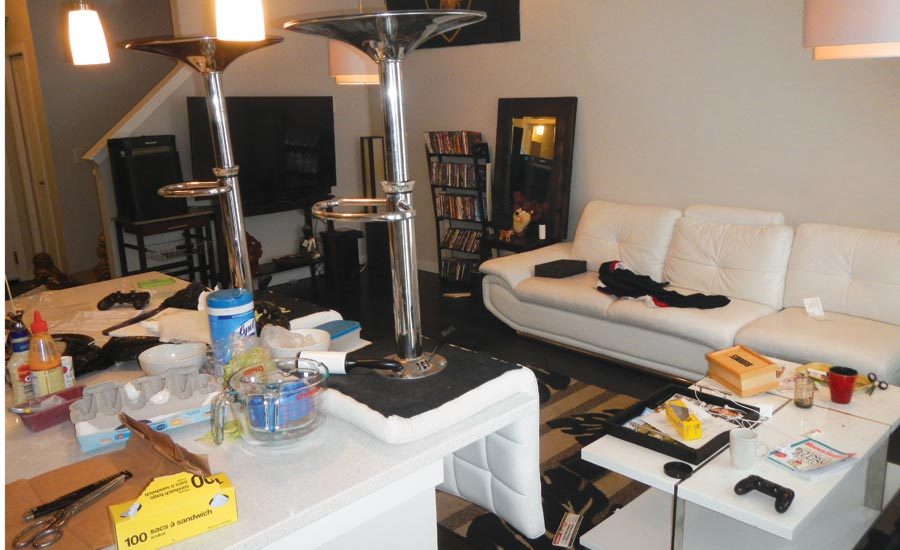

Photos courtesy of Mayken Hazmat Solutions.

Photos courtesy of Mayken Hazmat Solutions.

Photos courtesy of Mayken Hazmat Solutions.

Photos courtesy of Mayken Hazmat Solutions.

Photos courtesy of Mayken Hazmat Solutions.








When you hear the word fentanyl, what comes to mind? Perhaps Michael Jackson’s deadly overdose? Or Prince’s overdose death? According to the CDC, the death rate of synthetic (man-made) opioids increased more than 72 percent from 2014 to 2015. Those synthetic opioids include tramadol and fentanyl, but exclude methadone.
Fentanyl is 50 times more potent than heroin, and 100 times more potent than morphine, according to the CDC. While prescribed primarily to manage intense pain, fentanyl can also be made illegally, and is often mixed with heroin or cocaine, with or without the knowledge of the drug user. The CDC says adding fentanyl increases the drug’s effect. There have been rapid increases in reported illegal fentanyl manufacturing and usage in the Northeast, Midwest, and parts of the Southern U.S. in the last three years.
The U.S. isn’t the only place to see a major influx in fentanyl-related overdoses and labs. North of the border, Alberta is in what their public health agency calls an opioid crisis. According to Alberta Health, 193 Albertans suffered fentanyl-related deaths between January and September of 2016. There were 205 fentanyl-related deaths during the same period in 2015. These numbers are significantly higher than just several years prior. For example, there were six fentanyl-related deaths in 2011 and 29 in 2012. However, they are making major strides to curb opioid use.
How to Spot a Possible Fentanyl Lab
- Fentanyl pills are generally white or green and may have similar markings to a Percocet pill.
- Equipment looking like a pill pressing machine and/or powder mixers.
- Lumber pieces and other types of wood possibly to stabilized the pill press (Concrete block and other weights could also be a sign).
- Heavy Dust – Any white powder (or green dust) can be found aerosolized, forming a hue on most surfaces in the property contents and structure.
- Shipping Materials – Shrink wrap, tape and protective boxed corners for packaging materials because some labs could be suspected of supplying for many locations.
- Over the counter caffeine and glucose powders that are used as fillers when compressing into pills.
In the meantime, there is a major need for skilled remediation contractors who understand how to properly clean up after a fentanyl lab. This differs from other illicit drug labs like meth on many levels. This is where Mayken Hazmat Solutions, based in Calgary, comes in. Dean and Jeanette May own and operate the company; Dean has several decades of experience in remediation and is trained and educated in handling hazardous materials and emergency response. In the beginning, Mayken did a lot of marijuana lab cleanups – on top of crime and trauma scene cleaning, hoarding cleanup, and other similar services. Then, fentanyl labs came along.
“Fentanyl is a big thing,” Dean explained. “It has become so predominant in British Columbia, and Alberta.”
Last year, the company handled three fentanyl lab cleanups in Calgary. Now, they’re being called to places further away to help. As more agencies and property owners reach out to them for help, the Mays are trying to make it clear this cleanup process is all about sharing information, following HAZMAT guidelines, and being thorough. Anyone thinking about getting into this line of work needs to work closely with authorities and health agencies in their area.
“As far as we know, no one in Western Canada has remediated fentanyl,” Jeanette said. “We are getting contacts from the states because everyone wants to know how to do this right. We follow Alberta Health and their guidelines. There has been a lot of sharing of information, and a lot of talking before we came up with an acceptable scope of work.”
The Cleanup Process
Meth cleanup involves a lot of chemicals and residue. Fentanyl cleanup does not; instead, you are dealing with powder from the ingredients and green dye.
For starters, safety is always top of mind. Every crew member is covered head to toe in PPE – hoods, nitrile gloves, chemical-resistant rubber gloves and boots, full-face respirators, the works. Plus, gloves and boots are taped to the suit to limit any outside airflow or contaminants.
“The cleanup process is very in depth. Everything has to be HEPA-vacuumed, including the contents, to hopefully get a high percentage of the fentanyl removed from the property,” said Dean. “Then, everything is sprayed down with a disinfectant, white washed, and cleaned three to four times.”
Dean explained that just the process of the illegal drug makers pressing or crushing the pills makes the fentanyl dust go airborne; the green dust (the color is the result of a green dye used in the manufacturing process) is now a trademark of the drug. So cleanup teams should treat every speck of dust as if it is fentanyl.
All of the contents have to be removed, and most of them need to be totally thrown out. Fentanyl is extremely potent, and the fine dust or powder created during the manufacturing phase is very difficult to remove completely. In short, any soft goods need to be wetted down, removed from the building, and thrown away.
Since there is no definitive testing available for fentanyl because such a small quantity is fatal, it can be difficult to prove a space has been thoroughly cleaned. Dean suggests the best way to prove the drug is gone is by comparing the initial NIK test police do to confirm the presence of an opioid substance in the home when they arrive with another NIK test done after the remediation is complete. That test should be done on surfaces where there was an opioid found when law enforcement initially arrived on scene. Plus, you should do a thorough white glove inspection.
Jobs can take anywhere from four to five days to complete, to weeks – depending on the size of the property and extent of the drug operation.
Safety Beyond PPE
In any cleanup job like this, safety has to be top priority. You never know when an addict might come looking for their next hit, or a friend or family member will come snooping around. The Mayken crews are fortunate that they have never had this happen on a job, but they still take every necessary precaution to stay safe. Once they are inside, doors are shut and locked tight.
Dean also keeps several naloxone kits at every job site just in case of accidental ingestion or harmful contact with the drug. He just went through a quick five minute training with a pharmacist on how to use the kit and was good to go.
“Protect yourself, your workers, the neighbors, and the neighborhood,” Dean emphasized. “Frequently, local children are outside riding their bikes, playing with the dog, kicking the ball. Control the product and the environment, and don’t let [the fentanyl] get outside.”
Who Pays the Bill?
That’s pretty simple: the property owner. Just like most meth lab and marijuana grow operation cleanup jobs, fentanyl lab cleanup likely won’t be covered by insurance because it is an illegal activity. In Alberta, when illegal drugs are found at a scene, the property is immediately condemned, sealed up and boarded up. That means no one is going back inside until the property has been appropriately cleaned.
Dean and Jeanette agree it tends to be worth the investment for property owners to pay for the remediation to be done, rather than dealing with months of lost rental income.
Bottom Line
Fentanyl is a growing problem in the U.S. and Canada. It may soon be necessary for states to establish formal cleanup guidelines, but until those are in place, if you do choose to handle fentanyl lab clean up, be sure to work with the local health department and law enforcement. Be sure you agree on a scope of work, and be sure you are protecting your team – and anyone else involved.
Looking for a reprint of this article?
From high-res PDFs to custom plaques, order your copy today!




